The Intel SSD DC P3700 Review Part 2: NVMe on Client Workloads
by Anand Lal Shimpi on June 10, 2014 12:07 AM EST- Posted in
- Storage
- SSDs
- Intel
- Intel SSD DC P3700
- NVMe
Random Read/Write Speed
The four corners of SSD performance are as follows: random read, random write, sequential read and sequential write speed. Random accesses are generally small in size, while sequential accesses tend to be larger and thus we have the four Iometer tests we use in all of our reviews.
Our first test writes 4KB in a completely random pattern over an 8GB space of the drive to simulate the sort of random access that you'd see on an OS drive (even this is more stressful than a normal desktop user would see). We perform three concurrent IOs and run the test for 3 minutes. The results reported are in average MB/s over the entire time.

Our enterprise look at the P3700 focused on steady state 4KB random write performance, but surprisingly enough our short burst/8GB LBA space testing puts the P3700 at a very similar performance level. Here the P3700 is more than twice as fast as the closest SATA competitor, which is amazing despite the low queue depth of our test. I also included the old X25-M G2 to show just how far we've come - the P3700 is nearly 15x the speed of Intel's first generation MLC SSD controller.
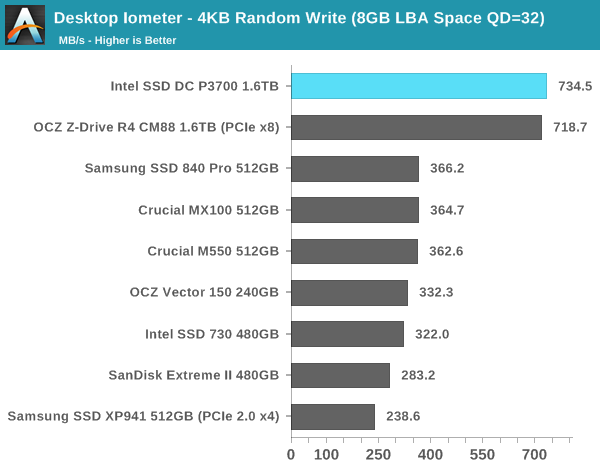
At a higher queue depth the Z-Drive R4 is able to catch up to the P3700, but being able to deliver excellent random IO performance even at low queue depths is a staple of a good client drive.
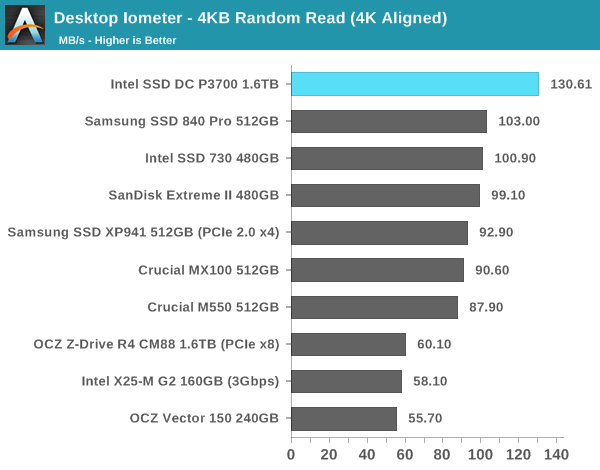
Random read performance is better than anything else here, but there's a limit to how much parallelism you can extract from a low queue depth random read workload.
Sequential Read/Write Speed
To measure sequential performance we run a 1 minute long 128KB sequential test over the entire span of the drive at a queue depth of 1. The results reported are in average MB/s over the entire test length.
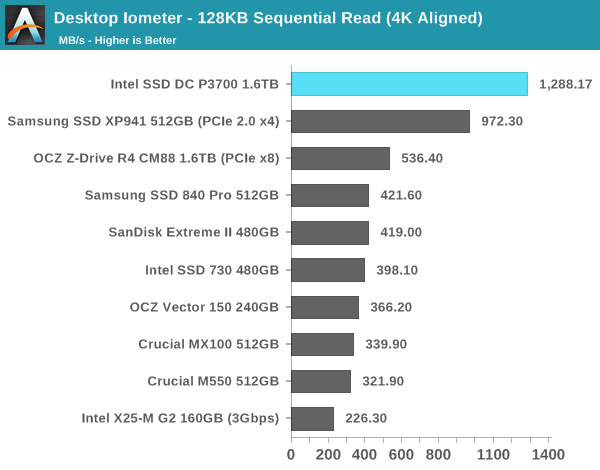
Once again we see the P3700 does extremely well at low queue depths, here its sequential read performance is substantially better than anything else.
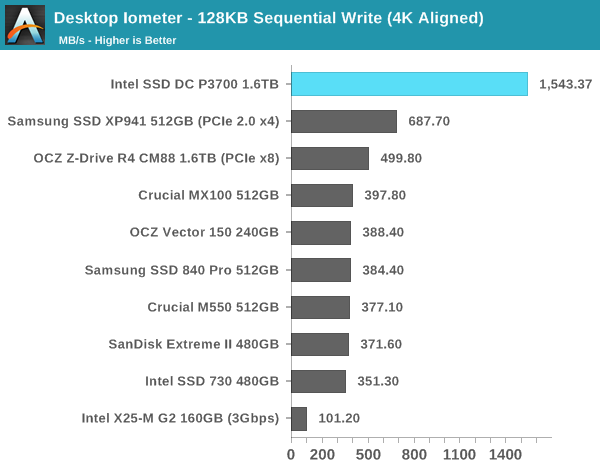
Sequential writes are even more impressive. We typically never see this sort of performance at a queue depth of 1. The P3700's 18-channel controller and firmware do a good job of splitting up write requests across as many parallel die as possible. Once again comparing the P3700 to the old X25-M G2 we see 15x the performance in 6 years.
AS-SSD Incompressible Sequential Read/Write Performance
The AS-SSD sequential benchmark uses incompressible data for all of its transfers. The result is a pretty big reduction in sequential write speed on SandForce based controllers. At a higher queue depth the P3700's performance scales even further. It used to only be possible to see these numbers on PCIe SSDs that leveraged multiple controllers.
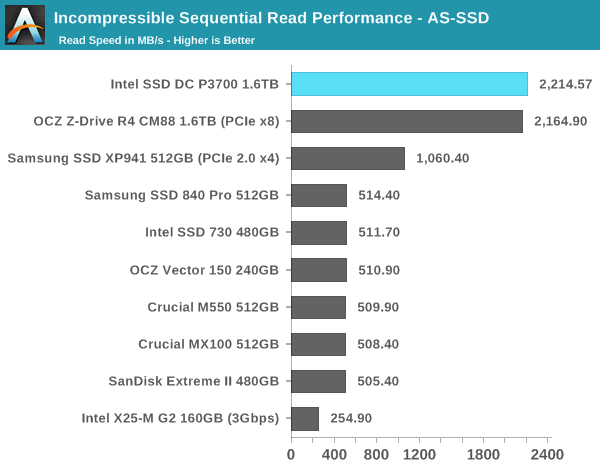
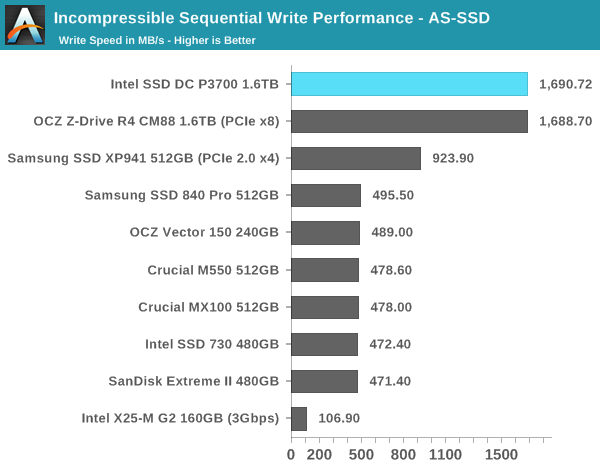










36 Comments
View All Comments
TelstarTOS - Tuesday, June 10, 2014 - link
+1TelstarTOS - Tuesday, June 10, 2014 - link
YES! Thank you for doing these further tests :)aperson2437 - Tuesday, June 10, 2014 - link
If I had money burning a hole in my pocket and there were computers available that could support these new SSDs I'd be buying one as soon as possible ... especially the P3700. Love those endurance numbers as much as the speed benchmarks. I can't wait until there is intense competition for these NVMe drives and the prices for 500 GB+ 3700s become as affordable as the Samsung 840 Pro SSD etc.Looks like the days of being irritated having to twiddle your thumbs looking at an hourglass while some program or game loads is about to be over with in the next few years. Near instantaneous full reboots of Windows. Awesome just thinking about it. THIS is what will amaze people once everyone can afford these NVMe drives. I think these SSDs will be a huge hit. Just gotta get that freakin price down!
seapeople - Tuesday, June 10, 2014 - link
I can see it now. The year is 2020. Joe Schmo unpacks his brand new screaming fast Dell with a top notch PCIE SSD. He gets out the timer and boots it up. Total boot time is 47 seconds, with 42 of that being the BIOS load. Then it only takes 45 more seconds for the wireless card to connect to the network. Yes.xMoe - Sunday, June 15, 2014 - link
hopefully the PCIe is on PCIe 4 and the time is down to 4.5 sec total boot to desktop/network ready time. If Windows 9 is worse than Windows 8 - all bets are off!Windows 8x - The Worst! of BOTH worlds! - for the price of 1/2 (or is it no charge already?).
Cerb - Saturday, June 14, 2014 - link
Impressive. The earliest tests didn't look at that hot for client work, but these sure do, and match up with PCPer's results. Now we just need to see the <$0.75/GB consumer models, how they fare, and how quickly NVMe support matures. If it's anything like AHCI was for HDDs, 2016 will be a killer year for storage :).